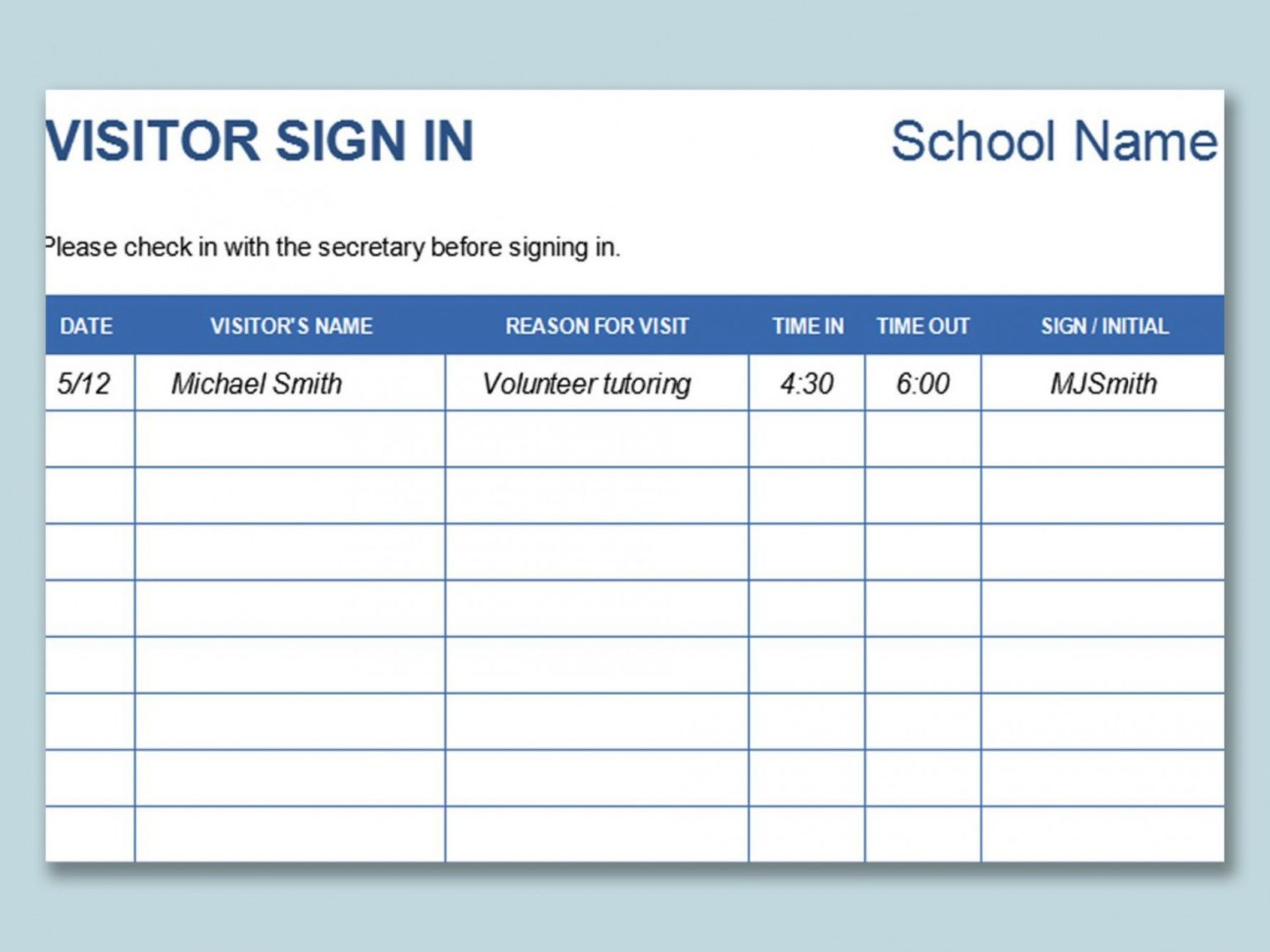In today’s fast-paced world, businesses and organizations need to keep track of the people who visit their premises. Whether it is a corporate office, a school, a hospital, or any other establishment, knowing who is coming in and out is crucial for security and record-keeping purposes. One simple and effective way to achieve this is by using a visitor’s sign-in sheet.
A visitor sign-in sheet is a document that allows visitors to provide their basic information and the purpose of visiting when entering a building or facility. It typically includes fields for the visitor’s name, contact details, date and time of arrival, destination or person being visited, and any other relevant information. This sheet is usually placed at the reception or entrance area, where visitors can easily access and fill it out.
While the concept of a visitor’s sign-in sheet may seem straightforward, its benefits and uses go beyond just collecting data. In this article, we will explore why businesses and organizations should implement this simple yet powerful tool, and how it can improve security, communication, and overall efficiency.
The Importance of a Visitor Sign-in Sheet
A visitor sign-in sheet serves multiple purposes and offers various benefits to businesses and organizations. Let’s take a closer look at some of the key reasons why using this tool is essential:
- Enhanced security: By asking visitors to sign in, businesses can have a record of everyone who enters their premises. This can be crucial in the event of an emergency or security breach, as it allows authorities to quickly identify and locate individuals.
- Improved communication: A visitor’s sign-in sheet provides a way for employees to know who is visiting and where they are headed. This information can be shared with relevant staff members, ensuring that visitors are properly assisted and guided throughout their visit.
- Efficient record-keeping: Having a log of visitors can be helpful for future reference or follow-up. It allows businesses to keep track of the frequency of visits, identify trends, and analyze data to make informed decisions.
- Compliance with regulations: In certain industries, such as healthcare or education, it is necessary to maintain accurate records of all visitors. A visitor sign-in sheet helps organizations comply with relevant regulations and standards.
- Professional image: Implementing a visitor’s sign-in sheet shows that a business or organization takes security and visitor management seriously. It creates a professional and organized impression on visitors and stakeholders.
How to Create and Use a Visitor Sign-in Sheet
Now that we understand the importance of a visitor sign-in sheet, let’s delve into the process of creating and using one effectively:
1. Determine the necessary information:
Before creating a visitor sign-in sheet, consider the specific details that need to be collected. This may vary depending on the nature of your business or organization. In addition to basic information like name and contact details, you may want to include fields for visits, company or organization affiliation, and any specific instructions or disclaimers.
2. Design the sheet:
Once you have identified the necessary information, design a template for the visitor’s sign-in sheet. You can use software programs like Microsoft Word or Excel to create a customized sheet that suits your needs. Alternatively, there are also pre-designed templates available online that you can modify to fit your requirements.
3. Print and display:
After designing the sheet, print multiple copies according to the expected number of visitors. Place the sign-in sheet in a visible and easily accessible location, such as the reception area or entrance. Make sure to provide pens or markers for visitors to fill out the sheet.
4. Train staff members:
It is important to educate your staff members about the purpose and procedures related to the visitor’s sign-in sheet. Ensure that they understand how to assist visitors with filling out the sheet, where to store the completed sheets, and who to notify in case of any security concerns.
5. Periodically review and analyze:
Regularly review the completed sign-in sheets to identify any patterns or trends. This can provide valuable insights into visitor traffic, peak times, and areas that may require extra attention. Use this data to improve security measures, optimize staff allocation, or make any necessary adjustments.
Example of a Visitors Sign-in Sheet
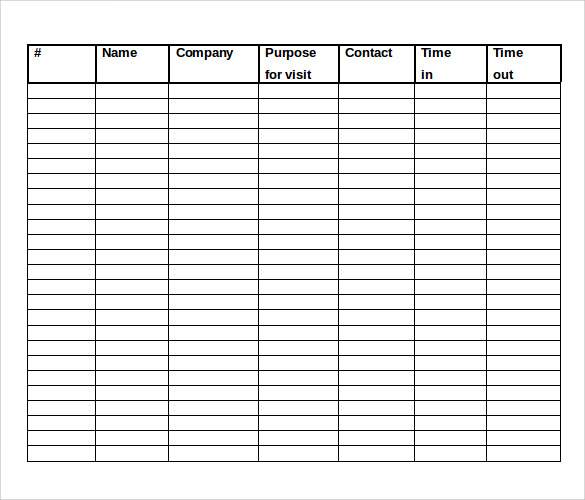
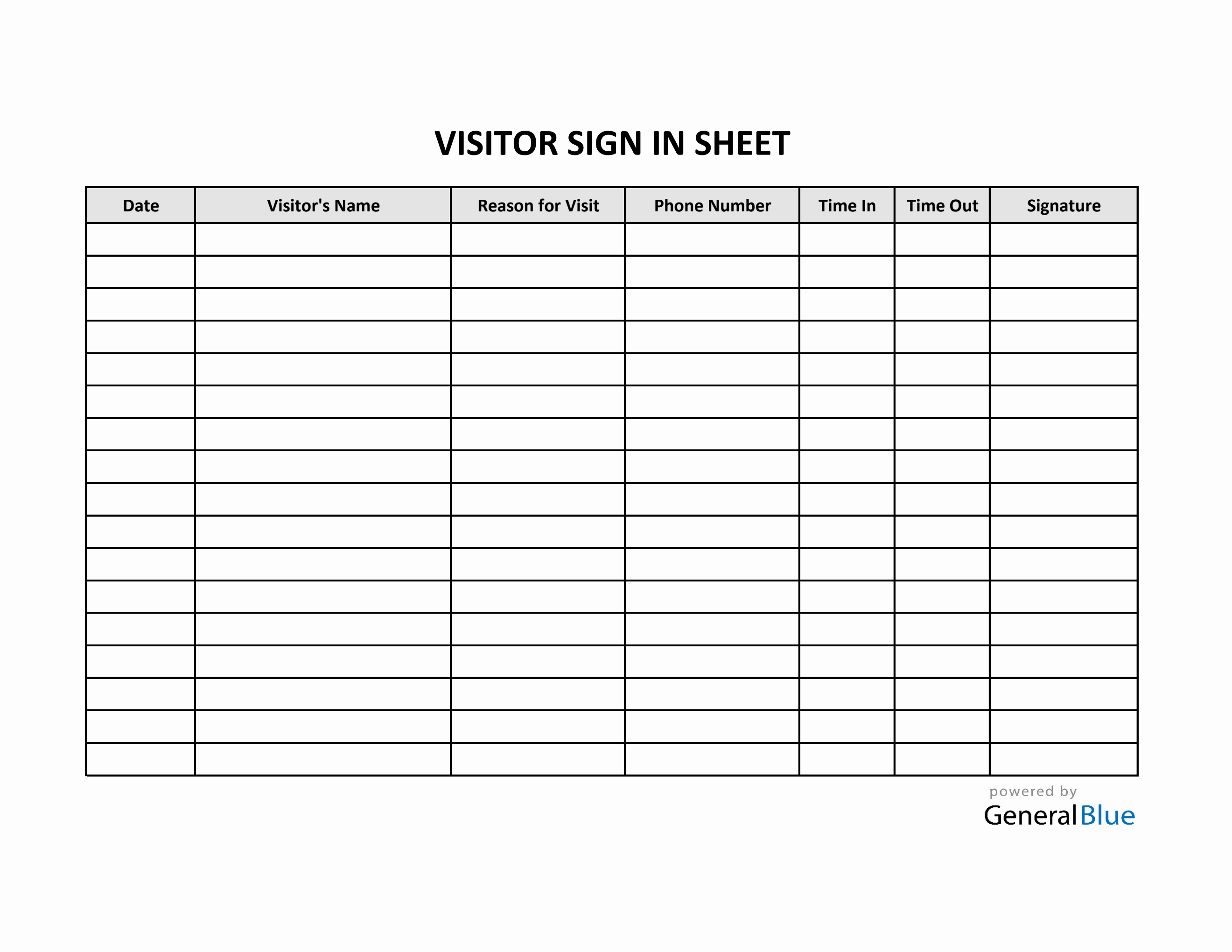
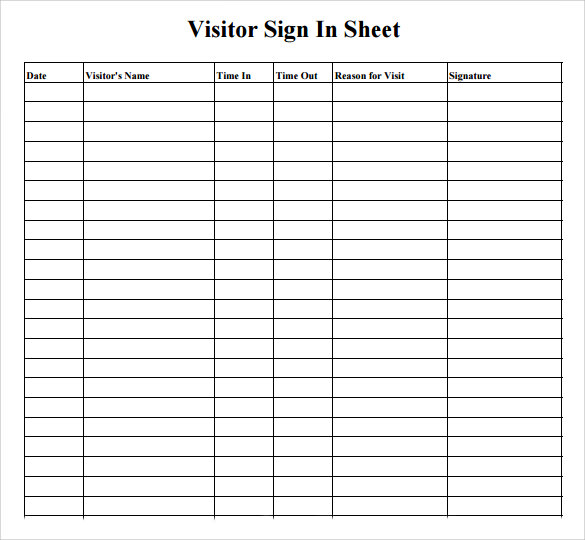
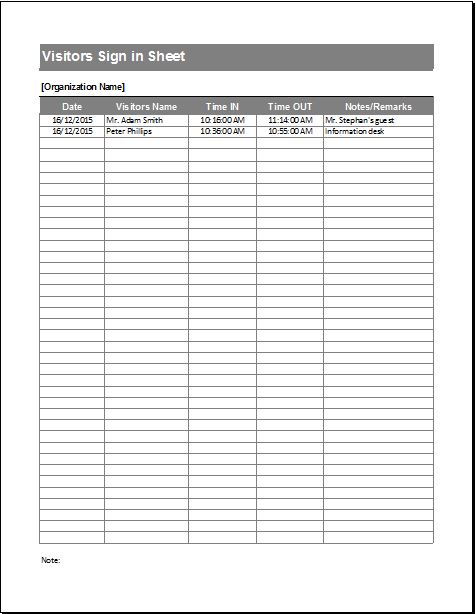
Below is an example of what a visitors sign-in sheet might look like:
- Date: [Date]
- Name: [Visitor’s Name]
- Contact Number: [Visitor’s Contact Number]
- Email: [Visitor’s Email Address]
- Company/Organization: [Visitor’s Company/Organization]
- Person/Department Visited: [Person/Department Name]
- Purpose of Visit: [Visitor’s Purpose of Visit]
- Time of Arrival: [Visitor’s Time of Arrival]
- Time of Departure: [Visitor’s Time of Departure]
Remember to customize the sign-in sheet according to your specific requirements and branding guidelines.
Conclusion
A visitor sign-in sheet is a simple yet effective tool that can greatly enhance security, communication, and record-keeping within a business or organization. By implementing this practice, businesses can create a safer environment for their staff and visitors, improve overall efficiency, and maintain compliance with regulations. Remember to customize the sign-in sheet to suit your specific needs and regularly review the collected data to make informed decisions. With these best practices in place, you can confidently welcome visitors while keeping your premises secure.
Visitors Sign-in Sheet Template – Download
